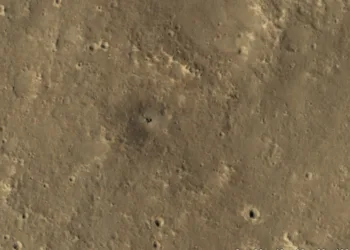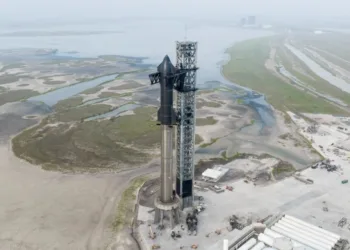The members of NASA’s Crew-8 mission returned safely to Earth on Friday after nearly eight months in space, with their stay at the International Space Station (ISS) being extended multiple times. The SpaceX Dragon capsule, which carried the four astronauts, made a successful splashdown in the Gulf of Mexico near Pensacola, Florida, just before 3:30 a.m. ET, after a fiery re-entry over southern Mexico.
The capsule re-entered the atmosphere at an impressive speed of 17,500 mph and eventually decelerated to a gentle 16 mph thanks to its parachute deployment before landing. The spacecraft, named Endeavour, had undocked from the ISS on Wednesday afternoon.
Throughout their mission, the Crew-8 team spent a total of 235 days in space, setting records for the longest duration of any human SpaceX mission. The spacecraft also recorded a remarkable 701 days in orbit for human-rated capsules.
The crew consisted of three NASA astronauts—commander Matthew Dominick, pilot Michael Barratt, and mission specialist Jeanette Epps—along with Russian cosmonaut Alexander Grebenkin from Roscosmos, Russia’s space agency.
A few hours after their splashdown, NASA announced that all four crew members had been taken to a nearby medical facility “for additional evaluation.” The agency clarified that the crew exited the capsule and boarded a recovery ship to undergo standard post-flight medical checks: “Out of an abundance of caution, all crew members were transported to the facility together. NASA will share more information as it becomes available.”
The Crew-8 mission initiated on March 3, 2024, aboard a SpaceX Falcon 9 rocket, and the astronauts spent more than seven months conducting scientific research at the ISS. Their studies included examining the movement of bodily fluids in space and investigating the influence of UV radiation and zero gravity on plant growth.
During their tenure at the ISS, Crew-8 contributed to a record number of people in orbit. In September, when the Soyuz MS-26 spacecraft transported a NASA astronaut and two Russian cosmonauts to the station, a total of 19 individuals were in space, including crew members aboard China’s Tiangong space station.
Originally set to conclude in August, the Crew-8 mission was extended several times due to complications in the test flight of Boeing’s Starliner capsule. In June, as the Starliner approached the ISS carrying two NASA astronauts, it experienced thruster issues, prompting NASA to decide it was too risky for the crew to return to Earth on the Starliner, which was eventually flown back empty in September.
Two Crew-9 mission members, who arrived at the ISS in September, are scheduled to bring back NASA astronauts Suni Williams and Butch Wilmore, who were left by Starliner, upon completing their mission in February 2025.
The return of Crew-8 was also postponed due to Hurricane Milton and unfavorable weather conditions at the planned splashdown sites in Florida during the week prior to their return.
Astronauts in Medical Evaluation
On Friday, three American astronauts and a Russian cosmonaut were transported to a medical facility “out of an abundance of caution” following their return from a nearly eight-month mission on the International Space Station. NASA confirmed this without providing further details.
The crew members—NASA astronauts Matthew Dominick, Michael Barratt, and Jeanette Epps, as well as Russian cosmonaut Alexander Grebenkin—were taken to a local medical center after their Crew Dragon spacecraft splashed down off the coast of Florida at 3:29 a.m. ET (0729 GMT).
Following their exit from the spacecraft, the crew underwent routine medical evaluations. However, NASA noted that “in an abundance of caution, all crew members were taken together for further evaluations.”
NASA, which typically maintains confidentiality regarding astronaut health issues, did not disclose what prompted the extra caution or the status of the crew’s health. Russia’s space agency has not yet responded to requests for updates on Grebenkin’s condition.









